Gluten Free Buyer Beware.
Gluten free restaurants abound in this brave new world of gluten free. As do gluten free grocery options. So, do you feel safer and more satisfied, or just more overwhelmed? Unfortunately, in spite of the FDA’s gluten-free food labeling regulations becoming final in August of 2014, there are still plenty of pitfalls gluten free consumers can fall into when shopping, eating out and trusting others with your health.
Ordering Gluten Free at Restaurants
“Gluten Free” but not for celiacs, or “Gluten Friendly” are two designations we’re seeing more of every day. Mom & Pop restaurants and large national chains alike, are searching for ways to both serve more consumers and protect themselves from liability, so they are getting more creative in their labeling and menu designations.
Most restaurants want to do right by their customers and none want to make anyone sick. However, when they start offering “Gluten Free” menus and “Gluten Friendly” menu options, many sink into the quagmire of semantics, confusing themselves and the consumer.
By way of example, let’s examine restaurants at both ends of the spectrum.
What Does “Gluten Free” Pizza in a Restaurant Mean?
(Domino’s Pizza’s initial gluten free disclaimer. NFCA is no longer mentioned.)
Domino’s “Gluten Free” Pizza
In 2012, Domino’s Pizza decided to launch a gluten-free pizza offering in its retail chains. After pressure from the gluten-free community, Domino’s changed its website to now read:
“Domino’s is proud to offer our Gluten Free Crust for those who are looking to reduce gluten in their diet….Domino’s DOES NOT recommend this pizza for customers with celiac disease. Customers with gluten sensitivities should exercise judgment in consuming this pizza.
While the Gluten Free Crust is certified to be free of gluten, the pizzas made with the Gluten Free Crust use the same ingredients and utensils as all of our other pizzas.”

Clearly, this “Gluten Free” pizza is not meant for those with celiac disease or serious gluten sensitivities, nevertheless, Domino’s advertises what appears at first blush to actually be what it claims to be: a “Gluten Free Crust.”
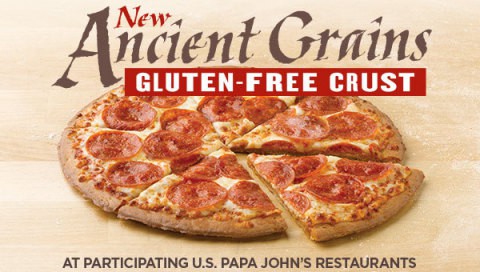
Papa John’s “Gluten Free” Crust
Papa John’s in 2017 released its own “Gluten-Free” crust which it also does not recommend for celiacs:
Papa John’s does not recommend pizzas with Papa John’s Ancient Grains Gluten-Free Crust for customers with Celiac Disease. Although Papa John’s Ancient Grains Gluten-Free Crust is gluten-free and Papa John’s employs procedures to prevent contact with gluten, it is possible that a pizza with Papa John’s Ancient Grains Gluten-Free Crust is exposed to gluten during the ordinary preparation process.
Nima Sensor tested Papa John’s “Gluten Free Pizzas” and found gluten, confirming that indeed it is NOT safe for celiacs or others with gluten sensitivity.
Reactions have been mixed in the gluten-free community, with most seeming to dismiss this as yet another option they can’t enjoy. The CEO of the Celiac Disease Foundation, Marilyn Geller, says “if Papa John’s says the pizzas aren’t safe for people with a serious gluten intolerance, ‘I would believe them, and I wouldn’t eat it.'”
Interestingly enough, celiacs and those with serious gluten sensitivities don’t seem to care much about ancient grains or “healthy” pizza; Papa John’s missed the mark if they are targeting that audience, as those folks just want good pizza that won’t make them sick with gluten contamination. The more likely scenario is that Papa John’s is like many chains (like Domino’s) going after the fad gluten-free dieter, not those who must eat gluten free for medical reasons.
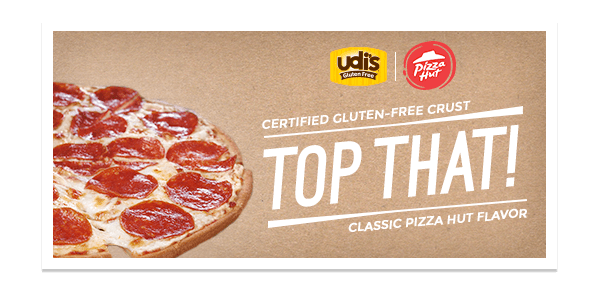
Pizza Hut “Certified Gluten Free” Pizza
Another popular pizza chain, Pizza Hut, initially announced the release of its “certified Gluten Free Pizza” in some of its retail outlets. Cheese only and pepperoni and cheese pizzas prepared on an Udi’s Certified Gluten Free crust and certified GF by the GIG (Gluten Intolerance Group of North America) organization will be prepared using a “gluten free kit” containing separate marinara sauce, cheese and pepperoni and prepared on parchment paper (*NOTE: this GF certification is no longer in place for Pizza Hut). Employees will also change their gloves and use dedicated GF pizza cutters, according to restaurant protocol.
These pizzas will also be prepared in a common kitchen used for preparing regular gluten pizzas; if other toppings are selected instead, the company says the pizza will no longer be gluten free (these pizzas are made for “those simply looking to reduce gluten in their diets.”).
Here is their allergen statement:
Although some Pizza Hut® restaurants offer Udi’s® certified gluten-free crust and select gluten-free ingredients, Pizza Hut® restaurants are not gluten-free environments. Due to the handcrafted nature of our menu items, variations in vendor-supplied ingredients, and our use of shared cooking and preparation areas, we cannot assure you that our restaurant environment or any menu item will be completely free of gluten. Therefore, we do not recommend this crust for individuals with Celiac disease. UDI’S is a registered trademark of GFA Brands, Inc. used under license.
As you can see, pizzas prepared in restaurants that are not free of gluten, but are prepared in very different ways, can still be described as being “Gluten Free.” Without digging deeper, it would be difficult to know just what each restaurant meant by that designation. Perhaps you don’t find either to be safe enough for your family, or perhaps one is acceptable and the other is not, but they all are labeled “Gluten-Free” at first blush.
When Gluten Free Foods Cease to be Gluten Free
The same difficulty arises with many other menus from restaurants described as being either “Gluten Free” or “Gluten Friendly” (or … not!). How is the customer supposed to know these restaurants define these terms, and if those foods will be served in a way that is safe enough for them?
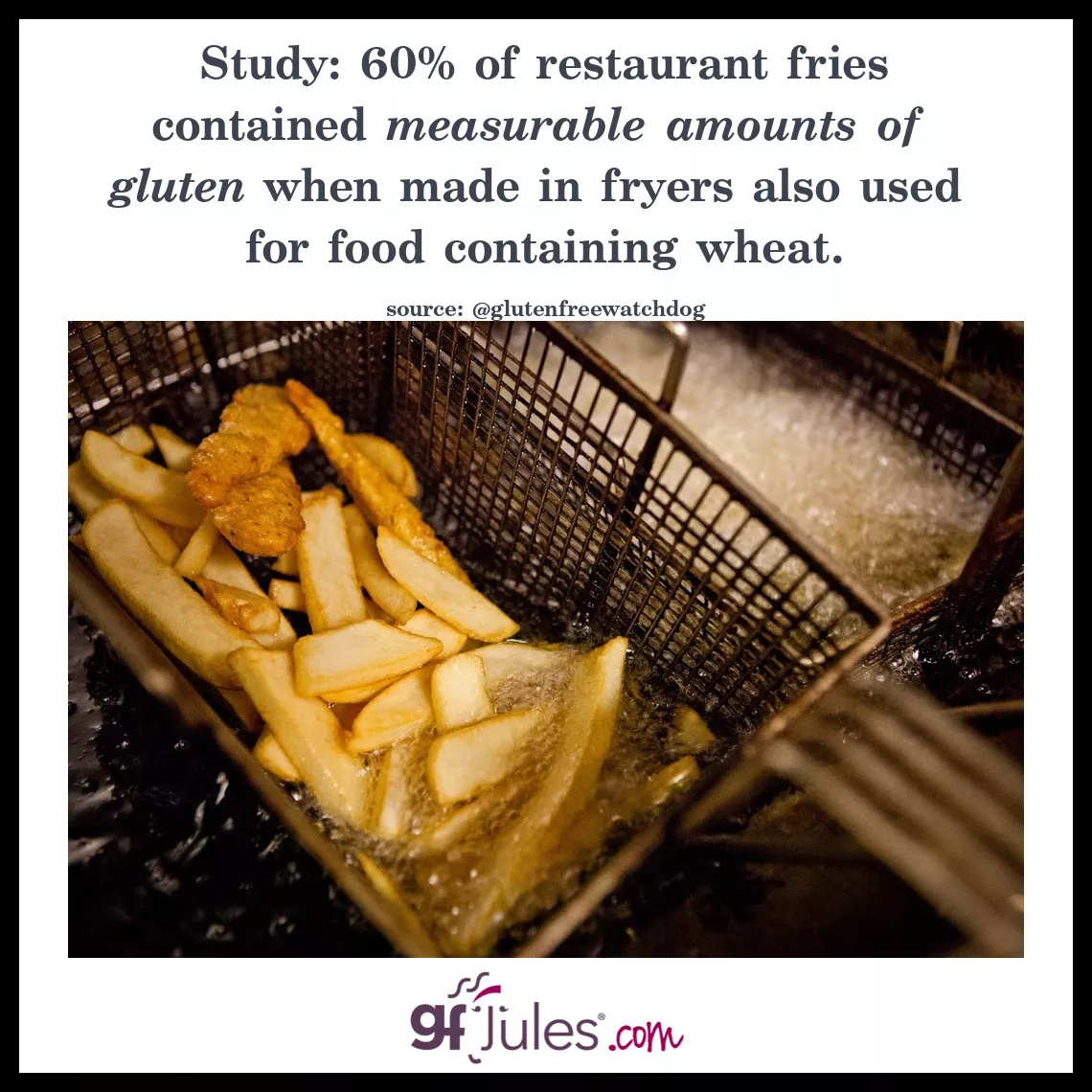
And even food items you would expect to be gluten-free are often not. Like french fries.
**Avoid anything fried unless you first confirm that the fryer is only used for gluten-free items.**
Most restaurants make fries in a fryer with other items like chicken nuggets which taint the oil, rendering the french fries contaminated with gluten.
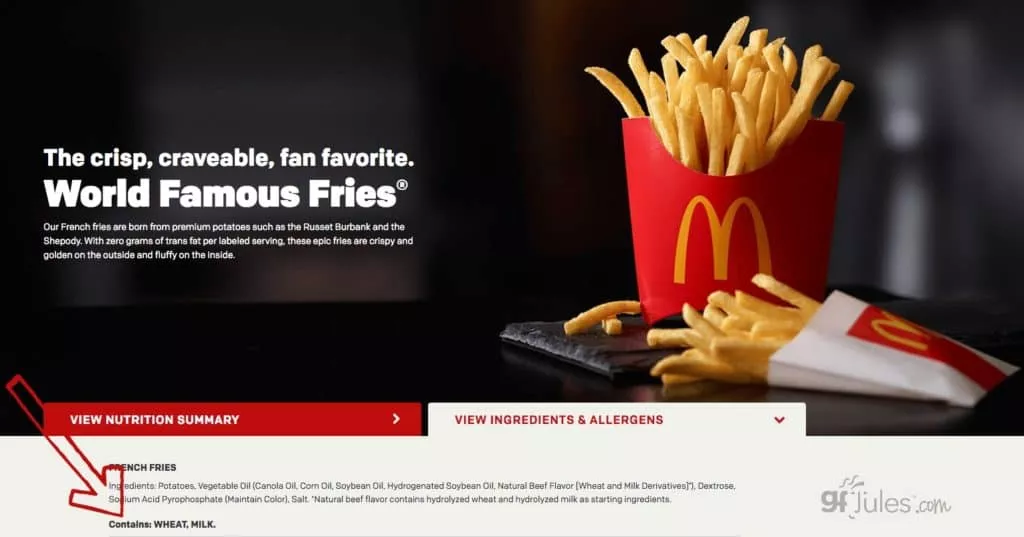
Still other restaurants even ADD gluten to their fries, like McDonald’s (which says nothing on its menu is certified gluten free). Do yourself a favor and skip anything from a restaurant fryer unless you are certain that it is only used for gluten-free foods and the oil is not recycled.
The only way to know is to do your research, ask the questions in advance and explain to management just how seriously you take your GF diet. The choice – and the risk – are ultimately up to you.
Grocery Stores Can Be Tricky for Gluten-Free Shopping …

Dedicated Gluten Free Sections Can Be Mislabeled
Shopping for gluten free foods at grocery stores can be as bad or worse than navigating menus at restaurants. It may seem like a dream come true to walk into your local grocery store and see dedicated gluten free sections.
Items that have been hand-picked and organized for your shopping ease and pleasure. Unfortunately this is not the case for most such areas.
The reality is that grocery buyers and those who stock the shelves have a whole store to manage, stock, arrange and organize.
They may take a brand that has some gluten free products and put the entire brand’s line in the “gluten free” section, even though some of those products are absolutely not gluten-free.
They also may forget to move the “Gluten Free” sign.

Manufacturer’s Products May be Mislabeled
OR they may rely on the fact that the manufacturer hasn’t changed its formula. OR mistakenly place products they believe to be gluten free in the section, even though they are in error.
OR the manufacturer’s own packaging indicates gluten free, but it’s not.
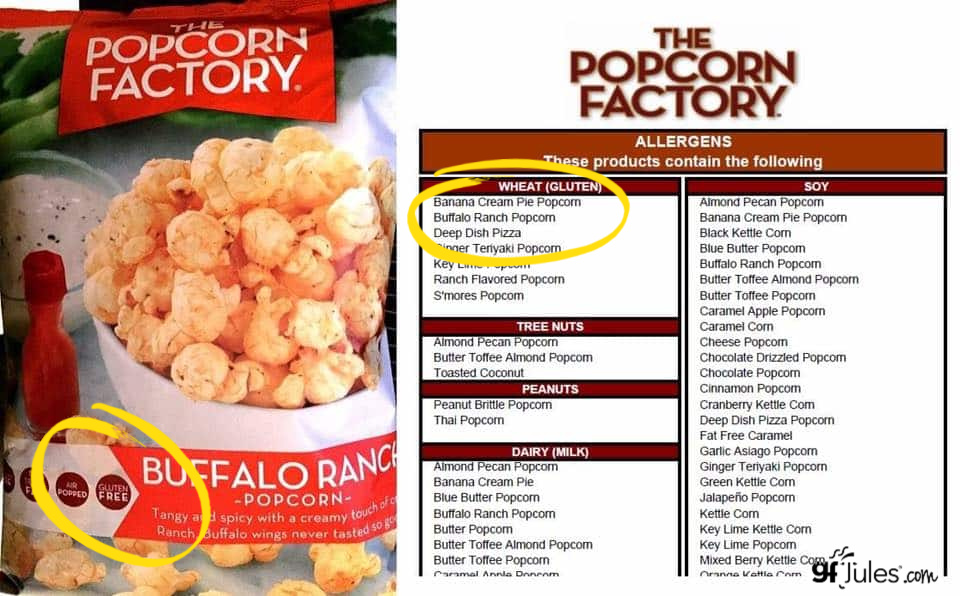
Manufacturers which make both gluten-free and gluten-full versions of the same product sometimes make mistakes.
OR the manufacturer’s packaging looks nearly identical for gluten-containing and gluten-free foods.

The shopper must still read every label for herself. Every label. Every time.
Eating Gluten Free with Friends & Family
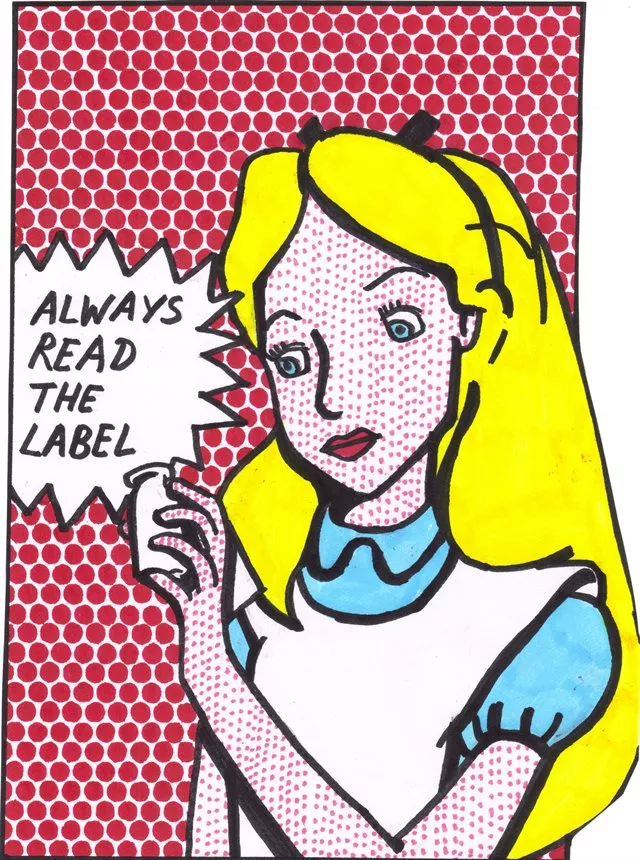 As confusing and confounding as all these situations are for us, as gluten free consumers, imagine how difficult this world would be to navigate if you only dabbled in gluten free because of a friend or family member. How would you find products you were certain were gluten free and safe?
As confusing and confounding as all these situations are for us, as gluten free consumers, imagine how difficult this world would be to navigate if you only dabbled in gluten free because of a friend or family member. How would you find products you were certain were gluten free and safe?
You would most likely simply rely on the manufacturers, stores or so-called gluten free restaurants to tell you. The nuances and serious danger of cross-contact would likely be lost on someone who doesn’t live this life day in and day out.
So your well-meaning aunt makes a boxed brownie mix for you that she says she bought in the GF section. Do you eat it?
At a birthday party for one of your daughter’s friends, the mother assures you that she purchased a gluten free pizza for your daughter so she will be able to eat like the other kids. Do you let her eat the pizza?
These are the difficult questions we have to ask ourselves every day. Which is why it’s sometimes not better to have so many choices and opportunities for mistakes.
Bottom line: buyer beware. Oh, and read those labels!

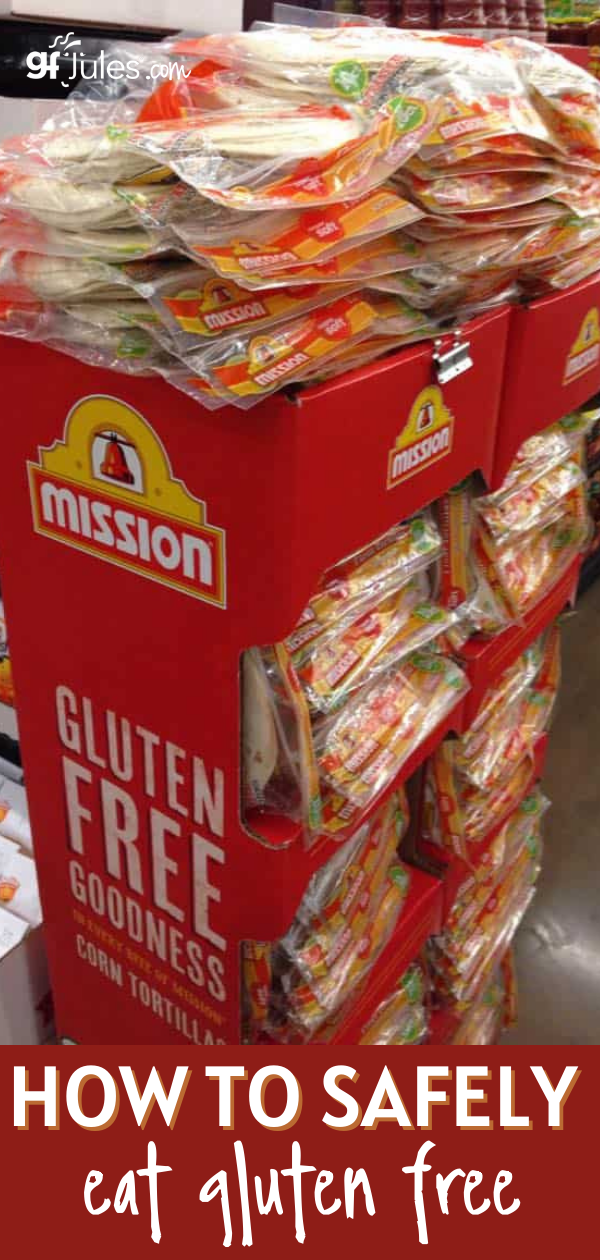



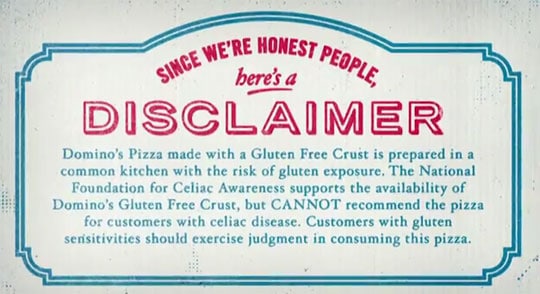






















Good article. Although I would be careful using the Celiac Disease Foundation for any opinions or as a source regarding Celiac Disease, or Gluten Intolerance
I stopped donating a few years ago when I realized they do nothing to spread Celiac Disease awareness and spend most of their time and donations by organizing & advertising Gluten Free expos. The last straw for me was when one of their writers put out an article that claimed that DH (Dermatitis Herpetiformis) means you have Non Celiac Gluten Sensitivity , NOT Celiac Disease! !!
Which is not only totally false information , it was dangerous information . I messaged them and told them their error – they kept arguing with me that they are correct ! How many people who read that article now believe that is true ??
Anyone who knows the FACTS , knows that ONLY someone with celiac disease can get DH !
How can a non profit organization , supposedly created to help those who have or suspect they have CD , or Non Celiac Gluten Sensitivity , not know such a fundamental Celiac FACT ??
That is indeed disturbing, Darlene. It always surprises me how much misinformation is out there on celiac disease, DH and the gluten free diet in general. It’s good that you wrote in to correct them, but it doesn’t sound like it did much good. I always try to point out for people that the CDF logo on a product does NOT mean that they have in any way tested, trained, audited or endorsed the gluten-free status of that product, and it bothers me that their logo certainly implies that it indeed HAS done so. There are lots of gluten-free/celiac groups out there that are trying to make a difference and do some good in our world and it just takes research to find the ones you personally feel most comfortable trusting and donating your money to. I have friends on both sides of the fence with CDF, since they do actual good with programs for camperships and other outreach to help celiac kids, but I totally understand not trusting a source when they have been misinformed in the past.
~jules
Well explained Jules, I heard you speak at the GF Expo in Philadelphia and never fail to learn something new from you. We have are lucky to have you on our side!
Thanks so much, Melissa. I’m happy to share — please feel free to pass the article along to anyone you know who could benefit from the information.
All the best!
~jules
Great article. Of the hypotheticals that you mentioned, I’ve experienced every one at least once. I really appreciate your bottom line: that we are each ultimately responsible for our own health, regardless of the ignorance around us. Being a celiac in a world suddenly filled with ‘gluten-free living by choice’ and all the businesses that want to capitalize on that can be scary…..our best protection is the same as it has always been: our own knowledge and assertiveness.
Thanks, Jeanne. I’m so glad you appreciated the information and the bottom line. It’s unfortunate that we can’t rely on others to monitor gluten cross-contact and ingredients for us, but it’s a reality we need to understand and accept, for our health’s sake.
All the best to you,
~jules
Order status changed from Pending Payment to Completed.